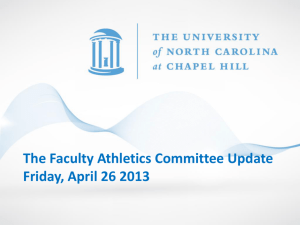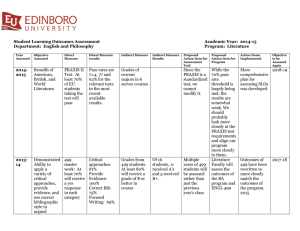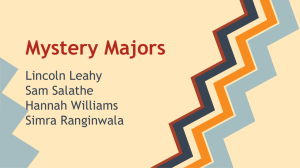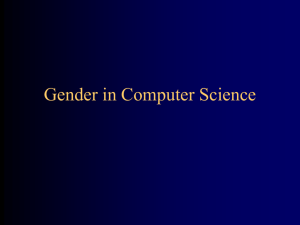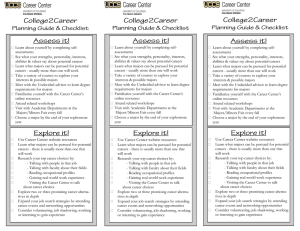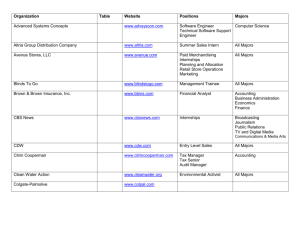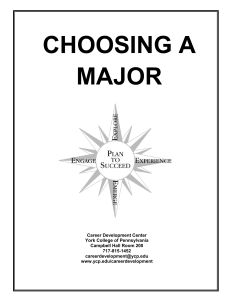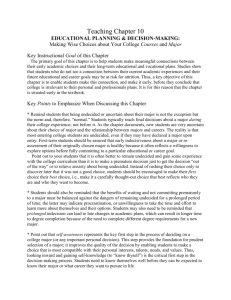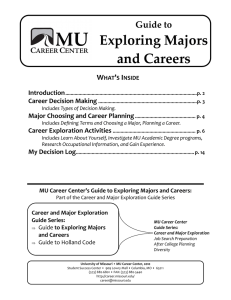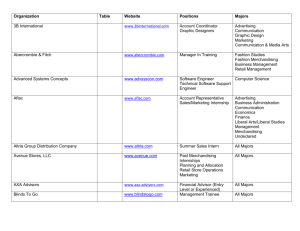Student Learning Outcome Goals and Objectives for Art
advertisement
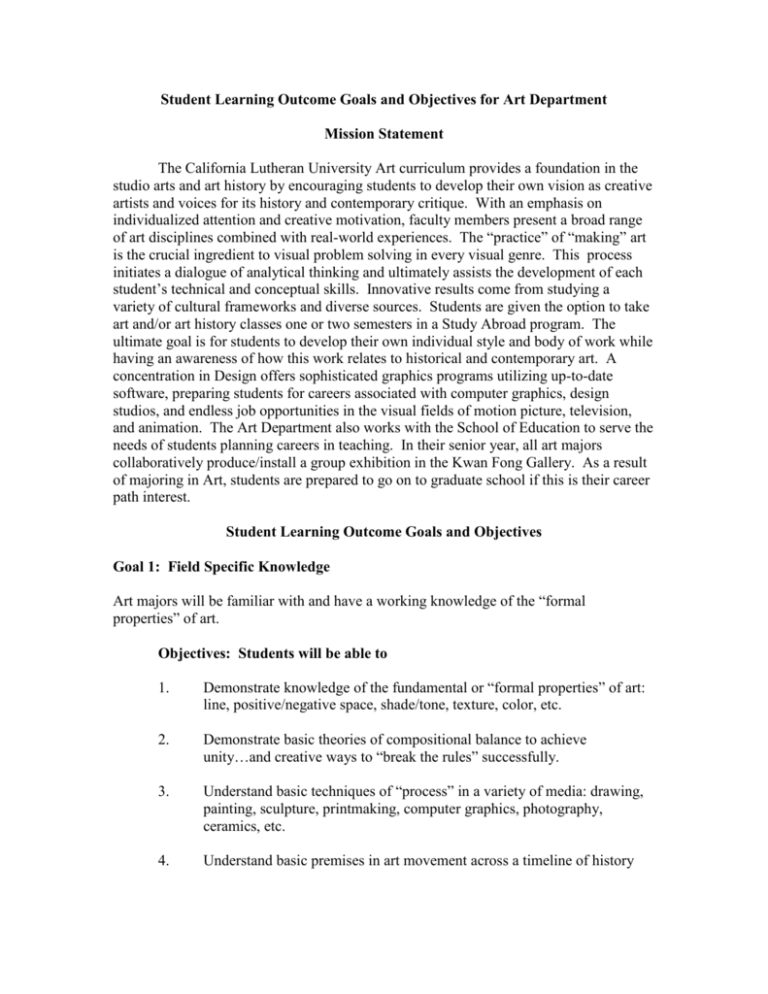
Student Learning Outcome Goals and Objectives for Art Department Mission Statement The California Lutheran University Art curriculum provides a foundation in the studio arts and art history by encouraging students to develop their own vision as creative artists and voices for its history and contemporary critique. With an emphasis on individualized attention and creative motivation, faculty members present a broad range of art disciplines combined with real-world experiences. The “practice” of “making” art is the crucial ingredient to visual problem solving in every visual genre. This process initiates a dialogue of analytical thinking and ultimately assists the development of each student’s technical and conceptual skills. Innovative results come from studying a variety of cultural frameworks and diverse sources. Students are given the option to take art and/or art history classes one or two semesters in a Study Abroad program. The ultimate goal is for students to develop their own individual style and body of work while having an awareness of how this work relates to historical and contemporary art. A concentration in Design offers sophisticated graphics programs utilizing up-to-date software, preparing students for careers associated with computer graphics, design studios, and endless job opportunities in the visual fields of motion picture, television, and animation. The Art Department also works with the School of Education to serve the needs of students planning careers in teaching. In their senior year, all art majors collaboratively produce/install a group exhibition in the Kwan Fong Gallery. As a result of majoring in Art, students are prepared to go on to graduate school if this is their career path interest. Student Learning Outcome Goals and Objectives Goal 1: Field Specific Knowledge Art majors will be familiar with and have a working knowledge of the “formal properties” of art. Objectives: Students will be able to 1. Demonstrate knowledge of the fundamental or “formal properties” of art: line, positive/negative space, shade/tone, texture, color, etc. 2. Demonstrate basic theories of compositional balance to achieve unity…and creative ways to “break the rules” successfully. 3. Understand basic techniques of “process” in a variety of media: drawing, painting, sculpture, printmaking, computer graphics, photography, ceramics, etc. 4. Understand basic premises in art movement across a timeline of history 5. Apply problem solving strategies as a means to create strong finished art/design projects, individually or collaboratively Goal 2: Critical Thinking Art majors will be able to use a variety of criteria to give a “reading” of individual artworks Objectives: Students will be able to 1. Have an awareness of how cultural frameworks from diverse groups influence the criteria of art critique 2. Make a list of strengths and weaknesses for specific art works while using a comprehensive list of gauges 3. Be conscious of the layerdness of visual artworks, including description, concept, psychology, gender, politics, history, spiritually, etc. 4. Articulate a viewpoint regarding controversial areas in the art world. Goal 3: Application of Art Students will be able to apply art “theory” and “practice” Objectives: Students will be able to 1. Produce carefully considered art works to final completion there by demonstration their “practice” of art. 2. Invest in experimentation & not always take the safe route while engaging in the creative process, promoting growth. 3. Develop their won style and body of work with the best art works exhibited in a Senior Art Exhibition. 4. Work collaboratively with other senior art majors to plan, design, and install the Senior Art Exhibit, therefore gaining the skills and experience to curate & hang a professional show (including the responsibilities of designing the art exhibit announcement; mailing; reception planning; etc., etc,) 5. Explain a spectrum of art movements important within art history, identifying major contributions and controversies. Goal 4: Communication Skills Students will be able to express themselves professionally and effectively in writing and oral presentations specific to the visual arts. Objectives: Students will be able to 1. Write a paper or essay that: - has a clear focus or addresses a creative writing “structure” goal - uses appropriate sources & information - synthesizes information to support ideas - uses art terminology appropriately - uses footnote/endnote format consistently when appropriate - uses standard English grammar in formal papers 2. Orally present art critiques and research/ reflective material in a way that: - is clearly organized and articulated - displays the individual student’s thought process, opinion, and interpretation. - actively relates the subject at hand with the “self” and the “world at large.”
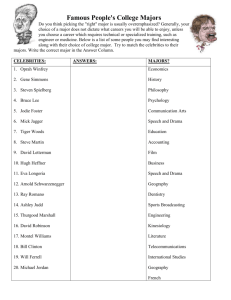
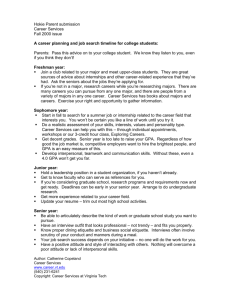
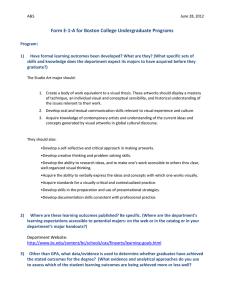
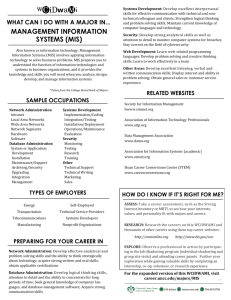
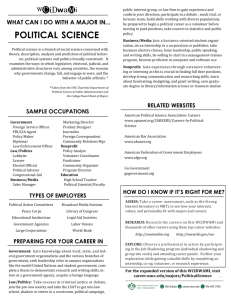
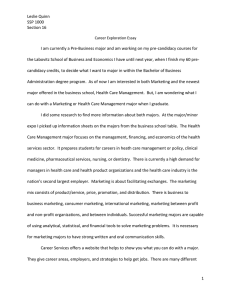
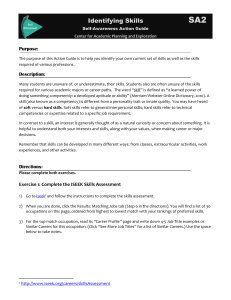
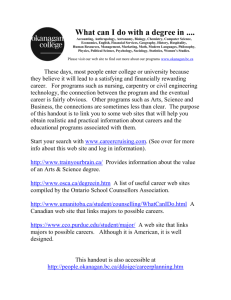
![Turning Your UC Degree into a Career [PPT]](http://s2.studylib.net/store/data/005232752_1-151ab801640c4ce97a8e3618d2b7a46d-300x300.png)

